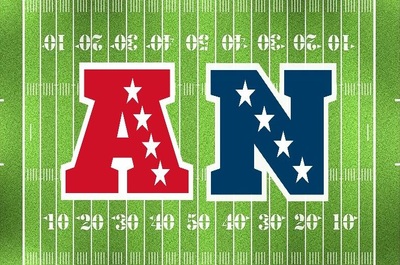 Just as the Premier League is the top league of professional football (soccer) in the UK, the National Football League (NFL) is the top American football league in the United States.
Just as the Premier League is the top league of professional football (soccer) in the UK, the National Football League (NFL) is the top American football league in the United States.
But unlike the Premier League, which is a single division that is made up of 20 sides, the 32 teams of the NFL are split into a number of divisions and conferences.
This can all prove rather confusing to people who are not familiar with the structural nuances of gridiron (as American football is also known). But fear not, because in this article we’ll explain how the NFL is structured and which teams feature in the AFC, the NFC and also take a look at the constituent divisions.
As well as this we will explain what bets you can place on the AFC and NFC (known as conference betting) and we’ll also attempt to work out whether teams from the NFC or AFC have proved the more successful over the decades.
The Structure Of The NFL
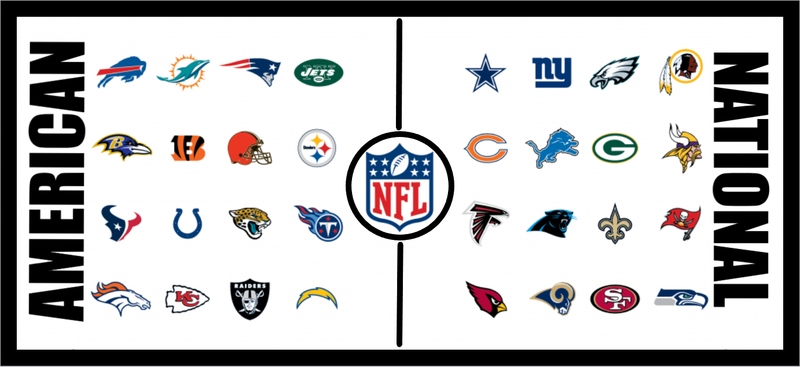
Before we get into which teams are in which divisions and conferences, let us first run through the basic structure of the NFL. As mentioned, there are currently 32 teams – or franchises – in the NFL and these are split into two conferences containing 16 teams each, the American Football Conference (AFC) and the National Football Conference (NFC). To very simply answer the titular question of this article, there is no real difference between these Conferences. The AFC and the NFC are really just sub-divisions of the wider NFL. That said, let us now look at them in more detail.
Both the NFC and the AFC are also split, in this case into four divisions of four teams each. Known – intuitively – as East, North, South and West, the four divisions in each conference generally contain sides that are relatively geographically close to one another, though there are some exceptions (such as the Miami Dolphins being in the AFC East and the Dallas Cowboys being in the NFC East).
The reason for the geographically split divisions is the sheer size of the USA. Whilst teams do play some games against rivals from further afield, most of their matches take place against opponents based relatively nearby. All the teams in the NFL are based in the United States, though on occasion some teams play some games overseas (for instance in the UK, Canada or Mexico) to build up their international fanbase.
Why Is The NFL Split Into AFC and NFC?
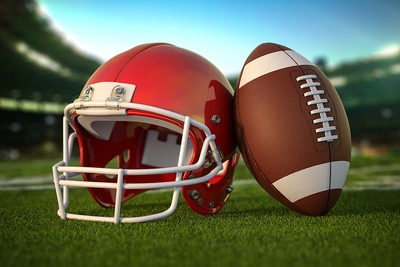 The NFL is split into two conferences rather than just being a single, all-encompassing league that is split into geographical divisions for historical reasons. The NFL itself was formed way back in 1920 when it was known as the American Professional Football Association (APFA) before it became the National Football League from 1922 onwards. Some years later, in 1959 to be precise, the American Football League (AFL) was formed as a rival to the NFL.
The NFL is split into two conferences rather than just being a single, all-encompassing league that is split into geographical divisions for historical reasons. The NFL itself was formed way back in 1920 when it was known as the American Professional Football Association (APFA) before it became the National Football League from 1922 onwards. Some years later, in 1959 to be precise, the American Football League (AFL) was formed as a rival to the NFL.
After a few years of what some saw as a rather pointless rivalry, the leagues decided to merge and in 1970 the enlarged NFL was formed that incorporated the two conferences. The 10 AFL sides all went into the newly formed AFC to be joined by three teams from the NFL, with the remaining 13 NFL teams going into the newly formed NFC. Back then each conference was split into three divisions, East, Central and West. After expansion to a total of 32 teams in 2002, however, each conference was split into the four divisions we have today.
Over the years, various teams (or franchises) have become defunct, while new ones have been formed. Franchises have sometimes changed location too, sometimes after merging with other franchises. This is almost always for commercial reasons. Some notable examples include the following:
- The Decatur Stanleys became the first team to move in 1921 when they upped sticks to Chicago and became the Chicago Bears
- The Portsmouth Spartans moved to Detroit in 1934 to become the Detroit Lions
- The Oakland Raiders moved to LA in 1982 to become the Los Angeles Raiders… before moving back to Oakland in 1995 and finally to Las Vegas in 2020
- The Los Angeles Chargers moved to San Diego in 1961 and then returned to LA in 2017
Now let’s turn our attention to the current teams in the AFC and NFC and the various divisions therein.
Which Teams Are In The AFC?
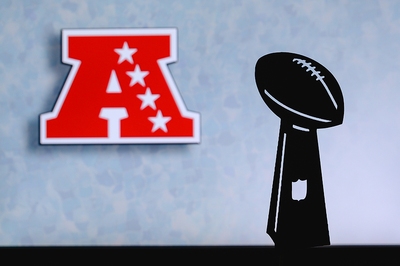 Starting first with the AFC and, from a geographical perspective, the divisions make quite good sense on the whole.
Starting first with the AFC and, from a geographical perspective, the divisions make quite good sense on the whole.
As mentioned earlier, though, there are some exceptions.
With the AFC East division, for example, the Bills, the Patriots and the Jets are all located in the north-eastern corner of the USA, but clearly the Dolphins are nowhere near.
The AFC West stretches from the West coast to Missouri, and the AFC South has a team (the Colts) from as far north as Indianapolis.
But then again, it’s a big country and there are always going to be significant distances to travel between the teams, with no perfect solution possible.
| Division | Club | Location |
|---|---|---|
| East | Buffalo Bills | Orchard Park, New York |
| Miami Dolphins | Miami Gardens, Florida | |
| New England Patriots | Foxborough, Massachusetts | |
| New York Jets | East Rutherford, New Jersey | |
| North | Baltimore Ravens | Baltimore, Maryland |
| Cincinnati Bengals | Cincinnati, Ohio | |
| Cleveland Browns | Cleveland, Ohio | |
| Pittsburgh Steelers | Pittsburgh, Pennsylvania | |
| South | Houston Texans | Houston, Texas |
| Indianapolis Colts | Indianapolis, Indiana | |
| Jacksonville Jaguars | Jacksonville, Florida | |
| Tennessee Titans | Nashville, Tennessee | |
| West | Denver Broncos | Denver, Colorado |
| Kansas City Chiefs | Kansas City, Missouri | |
| Las Vegas Raiders | Paradise, Nevada | |
| Los Angeles Chargers | Inglewood, California |
Which Teams Are In The NFC?
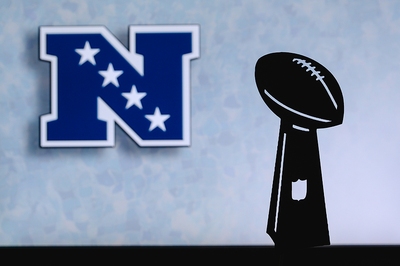 In the NFC, the geographical groupings of the teams in the four divisions work better than the AFC on the face of it.
In the NFC, the geographical groupings of the teams in the four divisions work better than the AFC on the face of it.
The big exception here is the Dallas Cowboys who are in the NFC East division despite being half a country away from the other three.
To drive from Dallas to New York, for example, is a journey of more than 1,500 miles!
On the whole though NFC teams have it easier than AFC teams where long distance travel is concerned at least.
| Division | Club | Location |
|---|---|---|
| East | Dallas Cowboys | Arlington, Texas |
| New York Giants | East Rutherford, New Jersey | |
| Philadelphia Eagles | Philadelphia, Pennsylvania | |
| Washington Football Team | Landover, Maryland | |
| North | Chicago Bears | Chicago, Illinois |
| Detroit Lions | Detroit, Michigan | |
| Green Bay Packers | Green Bay, Wisconsin | |
| Minnesota Vikings | Minneapolis, Minnesota | |
| South | Atlanta Falcons | Atlanta, Georgia |
| Carolina Panthers | Charlotte, North Carolina | |
| New Orleans Saints | New Orleans, Louisiana | |
| Tampa Bay Buccaneers | Tampa, Florida | |
| West | Arizona Cardinals | Glendale, Arizona |
| Los Angeles Rams | Inglewood, California | |
| San Francisco 49ers | Santa Clara, California | |
| Seattle Seahawks | Seattle, Washington |
How Do The NFL Conferences Relate To the Super Bowl?
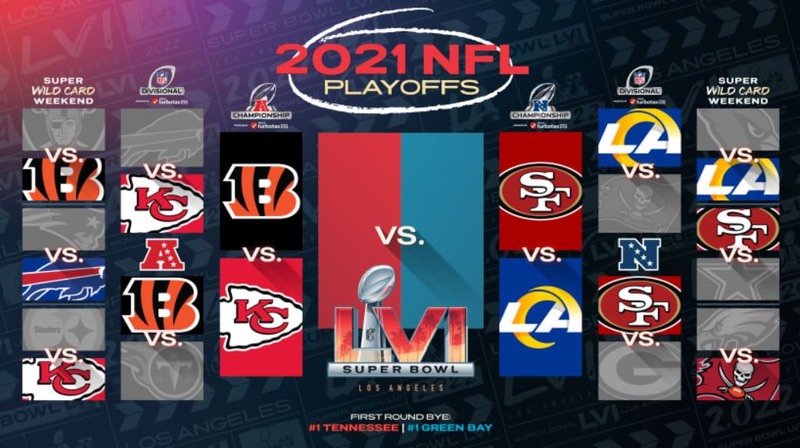
Each team in the NFL face 17 games in the regular season. Unlike the relatively simple situation in the English Premier League (in which each team plays each of the other sides twice, home and away, over the course of the season), things are a little more complicated in the NFL.
We won’t go into the full details here as it is covered elsewhere on the site, but as well as playing each of the other three sides from their division twice, they also face certain sides from other divisions. The exact matches each regular season vary such that each team will play every other team from their conference at least once every three years.
Leaving the relatively complicated formula behind, the best seven sides from each conference go into the playoffs. This includes the four champions from each division as well as the three sides with the best overall won-lost-tied records. The division winner with the best overall record goes through to the divisional playoffs, with the remaining three sides battling it out against the three wild card sides to make it to the divisional playoffs.
The winners of the two divisional playoff matches then face one another in the AFC Championship (for AFC sides) or NFC Championship (for NFC sides). The winners of the two championship games meet in the Super Bowl at a neutral venue. So as well as there being an overall NFL champion (i.e. the winner of the Super Bowl), each season will also see divisional and conference champions. Because of the format of the competition, the sport’s showpiece, the Super Bowl, always takes place between one side from the NFC and one from the AFC.
Conference Betting In The NFL
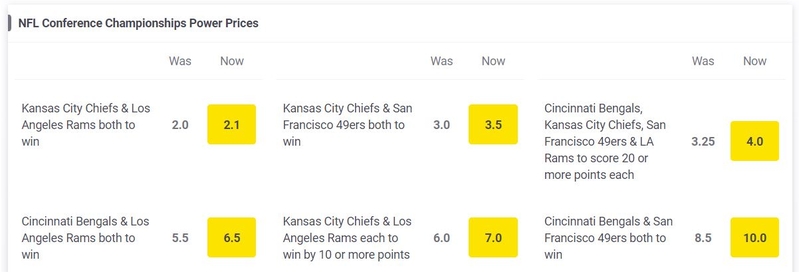
When it comes to betting on the NFL, there are numerous options for punters to get stuck into. Focussing on conference-specific bets, however, and one of the most popular options is to bet on the conference winner. These bets can be placed at any time from before the regular season commences right up until each of the championship games. Some people also choose to place a double by selecting the winner of the AFC and the winner of the NFC – in essence a bet on which two teams will contest the Super Bowl itself.
As you might expect, you can also bet on the winners of individual divisions within each conference and you can again place such bets at any point through the regular season (or before it begins). Again, you might choose to pick two or more teams you think will win their respective divisions and combine them in an accumulator bet or some other type of multiples bet such as a Lucky 15.
Related to conference betting, punters can also bet on which conference the eventual Super Bowl winner will come from, and indeed from what division they emerged. Obviously, bettors can also place wagers on any individual matches in the regular season, the playoffs or the Super Bowl itself. And there are so many betting markets available for each game that we won’t go into them here, but suffice to say you will be spoiled for choice.
Which Is Better: AFC Or NFC?
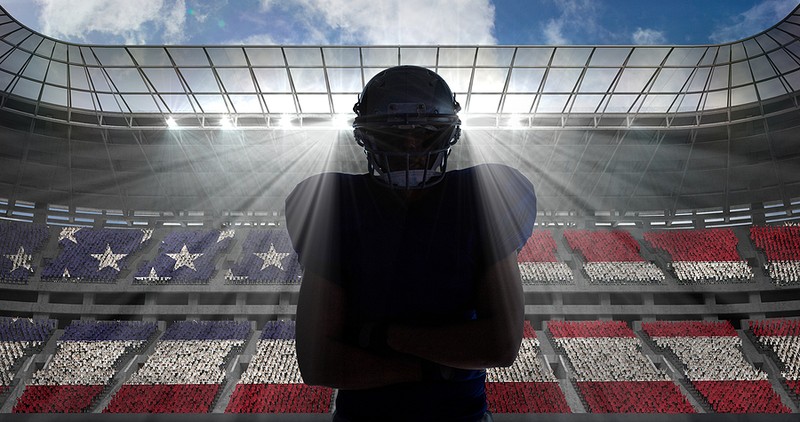
When it comes to assessing whether the AFC or the NFC is better, the simplest and most effective way is to compare the number of Super Bowl wins teams from each have mustered. We’ll look all the way back to Super Bowl I, which took place in January 1967 between the winners of the two separate leagues, as they were then, the NFL and the AFL.
Including that and the other three Super Bowls that took place before the merger in 1970, the AFC/AFL have won 27 Super Bowls and the NFC/NFL have won 28. If we disregard the four pre-merger Super Bowls, the result is still the same: the NFC has produced 26 Super Bowl winners to the AFC’s 25. As we can see, there really isn’t any statistically meaningful difference between the performances of the two Conferences, though when we look at specific eras, we do see one or the other dominating.
Largely thanks to the New England Patriots, the AFC have had the better of Super Bowls this century, with the AFC having produced the Big Game winner 13 times between the 2000 and 2020 seasons, with eight winners hailing from the NFC (not including the Super Bowl at the end of the 2021 season).
Looking further back and NFC teams had a great run of things in the 1980s and 1990s, winning every Super Bowl from the 1984 season to the 1996 season. During this era the San Francisco 49ers won four Super Bowls and the Dallas Cowboys won three. This illustrates the point that it is probably more accurate to see dominance in terms of teams that just happen to be from one Conference or the other, rather than that superiority being as a result of them being from that particular Conference.
